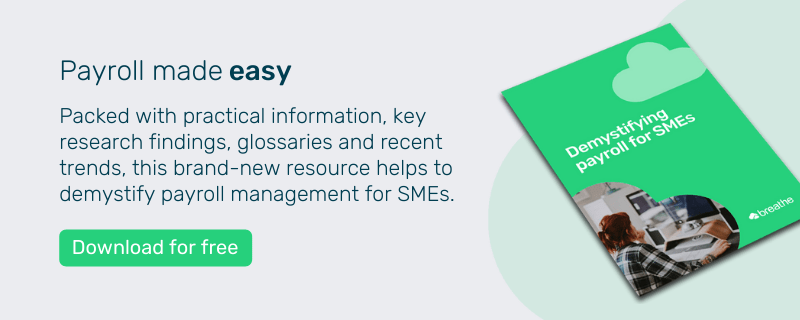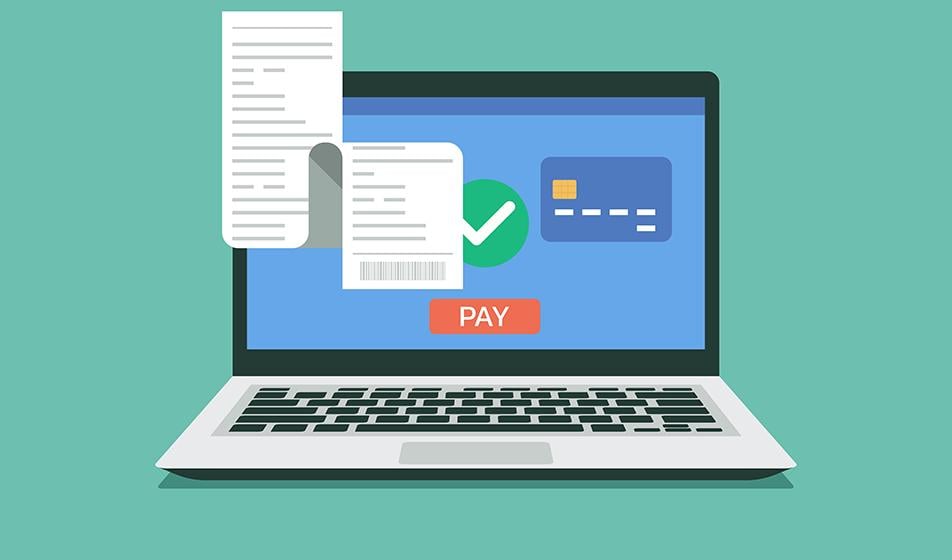Pension auto-enrolment was set up to help people save for their retirement. Since its introduction in 2012, UK employers are legally required to set up a workplace pension scheme into which they must enrol their employees and contribute to their savings.
What is pension auto-enrolment?
The State Pension alone rarely provides enough money for people to live on comfortably. For this reason, the Government created automatic enrolment as a way of encouraging people to save additional money for retirement.
The scheme has been highly successful and as of 2021, 79% of the workforce - or 22.6 million employees - have been auto-enrolled and are now building nest-eggs with the help of their employers.
In this post, we look at employers’ legal obligations. We also examine the steps they should take to enrol new and existing employees, and manage these as part of payroll administration.
What are the criteria for auto-enrolment?
How much do employers contribute towards employees’ pensions?
Who is exempt from auto-enrolment?
Managing pension related documents
How to help employees find pension schemed provided by former employers
What are the criteria for auto-enrolment?
Workplace pension schemes are subject to minimum regulatory and governance requirements. Employers must also contribute a set proportion of an employees’ salary to their pension pot.
Employers must enrol an employee into a workplace pension scheme if they meet the following criteria:
-
They are aged between 18 and State Pension age
-
They are not already in a workplace pension scheme
-
They usually work in the UK
-
They are classed as a 'worker'
How much do employers contribute towards employees’ pensions?
As of the 6th April 2019, the minimum required contributions are as follows:
Employer: 3%
Employee: 5%
Minimum contributions: 8%
The amount an employer and employee pay into a workplace pension scheme may vary depending on the pension scheme. However, by law, you and your staff must pay a minimum amount into the scheme.
You will also need to factor other types of staff pay into your calculations. These include:
- Salary
- Wages
- Commission
- Bonuses
- Overtime
- Statutory sick pay
- Statutory maternity pay
- Ordinary or additional statutory paternity pay
- Statutory adoption pay
The Pensions Regulator provides a free online contributions calculator to help you work out your costs for each of your employees. There are also various payroll software systems available which are recognised by HMRC and which automate manual PAYE calculations and reporting.
First steps for new employers
If you are a new employer who is navigating pension auto-enrolment for the first time, there are various resources available. These include online tools provided by The Pension Regulator which very clearly sets out your obligations based on your business’s circumstances.
The Pensions Regulator is the go-to resource for explaining your obligations as an employer. They also provide templates for all documents you need to manage auto-enrolment and comply with their regulations.
You will need to follow four key steps:
-
Choose a pension scheme. This is the most time-consuming aspect of setting up a new scheme and you will either need to find a scheme yourself or request help from an accountant or financial advisor. To check if an advisor is authorised by the Financial Conduct Authority, search the FCA register.
-
Work out who to put into your pension scheme. You must do this on the date your first member of staff starts work. This is known as your 'duties start date'. If you employ seasonal staff, auto-enrolments regulations may also apply to these employees as well as full-time team members.
-
Write to your staff. You must do this within six weeks of your first member of staff starting work for you. As an employer, you are required to write to every employee individually and explain how auto-enrolment applies to them. This isn’t as arduous as it sounds – you can find all the letter templates you need with The Pensions Regulator.
-
Declare your compliance. This is very important and if you fail to complete this step, you may be fined by the pension regulator. Before you submit your declaration of compliance your will need your letter code and PAYE reference. You have five months to complete your declaration from your duties start date.
Who's exempt from auto-enrolment?
Sole traders
If you are a sole trader with no other employees, you will have no workplace pension obligations. However, if your business grows and you do take on team members, this will change. Once you become an employer, you will need to set up auto-enrolment as soon as your first employee starts work.
Companies with multiple directors but no employees
If a company has multiple directors but no employees (such as in a family-run business) then the business is also exempt workplace pension obligations.
However, if the directors wish to opt into a workplace pension scheme, they can do so.
Opt-out notices
Employees can choose to opt out of a workplace pension if they choose to do so. This is usually done by completing a form provided by their employer or pension provider. If an employee chooses to go down this route, you must provide them with the contact details for your company’s pension provider.
There’s a limited amount of time - known as the opt-out window - within which an employee can opt out of your workplace pension. Once auto-enrolled, an employee has one calendar month to opt-out and claim a refund on any pension contributions they have made.
The opt-out window begins either on the day you provide an employee with enrolment information or the day on which your pension provider gives them the term and conditions of the scheme, whichever is later.
A valid opt out notice includes:
-
The date when the form was completed
-
The employer’s name
-
The employee’s full name
-
The employee’s National Insurance number or date of birth
-
The employee’s signature
The opt out notice must also contain the following statements, which give your employees more information about opting out and their rights as an employee:
-
‘Your employer cannot ask you or force you to opt out.’
-
‘If you are asked or forced to opt out, you can tell The Pensions Regulator.’
-
‘If you change your mind, you may be able to opt back in – write to your employer if you want to do this.
-
‘If you stay opted out of the scheme, your employer will normally put you back into pension saving in around three years.’
-
‘If you change your job, your new employer will normally put you back into pension saving straight away.’
-
‘If you have another job, your other employer might also put you into pension saving, now or in the future. The notice only allows you to opt out of pension saving with the employer you name in the notice. A separate notice must be filled out and given to any other employer you work for, if you wish to opt out of that employer’s pension saving as well.’
-
The following declaration must be included before the employee’s signature:
-
‘I wish to opt out of the pension scheme’
-
‘I understand that if I opt out, I will lose the right to pension contributions from my employer’
-
‘I understand that if I opt out, I may have a lower income when I retire’
Managing pension-related documents
As with all employee related documents, it’s important to carefully store all pension-related paperwork. The easiest way of doing this is to use a dedicated HR management system like Breathe, which includes dedicated document management functionality.
These days, most businesses with employees will use payroll software to calculate salaries, NI and tax deductions and to file information about these online to HMRC. This is termed Real Time Information (RTI) and has been a legal requirement since 2013.
Using a system like Breathe alongside payroll software can not only simplify document management, it can also help you comply with GDPR rules regarding employee data. That's because all employee information is stored securely in ISO 27001 certified datacentres. Datacentres accredited to this level will have had huge amounts invested in them to ensure they store data to the very highest level of security.
How to help employees find pension schemes provided by former employers
Few people stay in the same job for their entire working lives. This may make it hard for them to keep track of the different pension schemes in which they have been enrolled by previous employers.
If you want to help a new or existing employee track down pension providers – even if they don’t have the contact details for the company – the government’s pension tracing service is a very useful resource. It could help your people recover access to funds potentially worth thousands of pounds.
Although you’re under no legal obligation to help employees with access to pension pots provided by their former employers, it’s a nice gesture of support. What's more, if you use the tracing service yourself, you may even end up finding money you have forgotten about!

Author: Laura Sands
Laura is a writer who enjoys getting into the detail of subjects and sharing that knowledge with snappy, interesting content. When not typing away, she enjoys walks in the woods and curling up with a good book and mug of something hot.



.webp)

